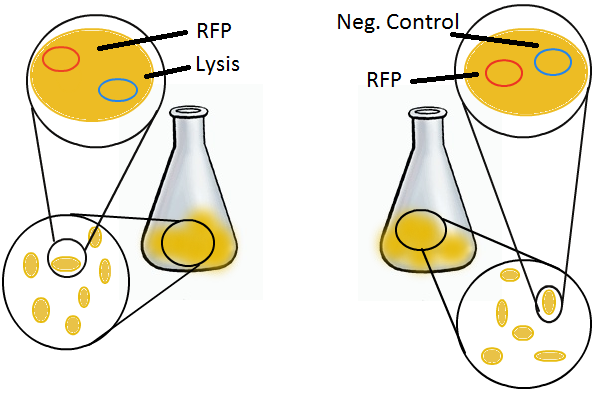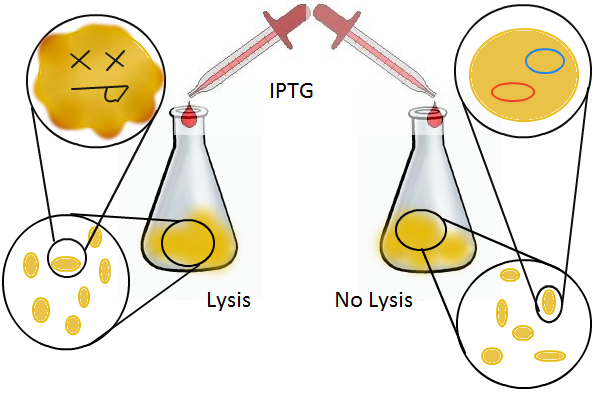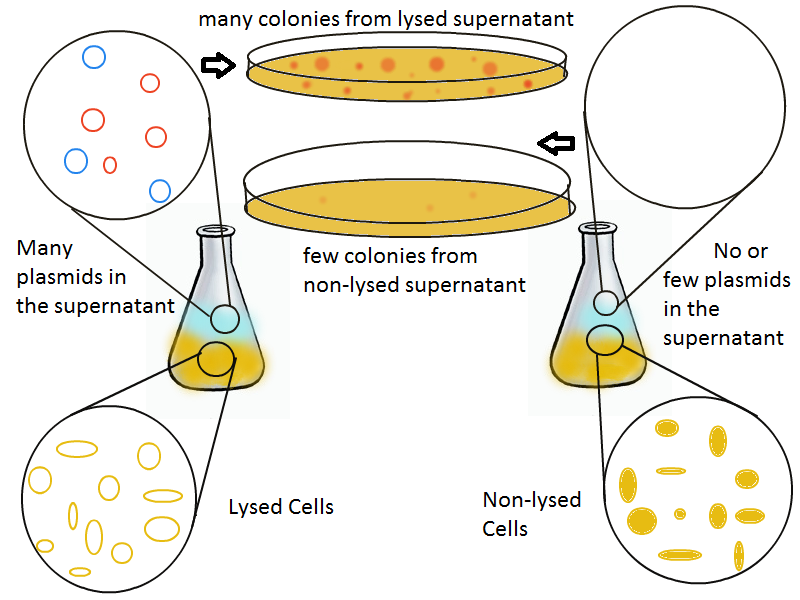Team:EPF-Lausanne/Our Project/T7 promoter variants/dnarecov
From 2011.igem.org
(Difference between revisions)
(Created page with "{{:Team:EPF-Lausanne/Templates/Header|title=DNA Recovery Experiment}} Having a lysis cassette driven by a T7 promoter is an important step towards being able to recover the DNA ...") |
|||
| Line 1: | Line 1: | ||
{{:Team:EPF-Lausanne/Templates/Header|title=DNA Recovery Experiment}} | {{:Team:EPF-Lausanne/Templates/Header|title=DNA Recovery Experiment}} | ||
| - | + | === Introduction === | |
| - | + | ||
| + | Once the basic mechanism of cell lysing is confirmed, the next step is to show that DNA can be recovered from the supernatant. | ||
| - | + | * [[Team:EPF-Lausanne/Our Project/T7 promoter variants/dnarecov/exper| The Experiment ]]: The Experimental Setup for the Lysis-based DNA Recovery Experiment | |
| + | |||
| + | * [[Team:EPF-Lausanne/Our Project/T7 promoter variants/dnarecov/results| The Results ]]: The Results from the Lysis-based DNA Recovery Experiment | ||
| + | |||
| + | |||
| + | We grow two large cultures of cells. One contains cells that will lyse and release plasmids into the supernatant while the other has non-lysing, "normal" cells. | ||
[[File:broth_noiptg.png]] | [[File:broth_noiptg.png]] | ||
Revision as of 09:53, 21 September 2011
DNA Recovery Experiment
Introduction
Once the basic mechanism of cell lysing is confirmed, the next step is to show that DNA can be recovered from the supernatant.
- The Experiment : The Experimental Setup for the Lysis-based DNA Recovery Experiment
- The Results : The Results from the Lysis-based DNA Recovery Experiment
We grow two large cultures of cells. One contains cells that will lyse and release plasmids into the supernatant while the other has non-lysing, "normal" cells.
Adding IPTG to both flasks induces lysis in one set of cells but not in the others.
Thanks to qPCR, the supernatant harvested from the lysing culture reveals increased numbers of plasmids while the non-lysing culture exhibits significantly lower numbers of plasmids. A similar test involves transforming the supernatant (whose plasmid content is not known a priori) into cells and counting the number of resulting colonies. The plates containing transformations from the lysing supernatant have vastly superior number of colonies compared to the non-lysing supernatant transformations.
 "
"


